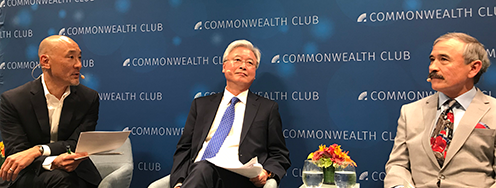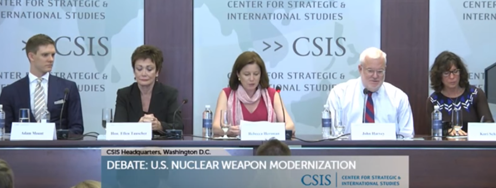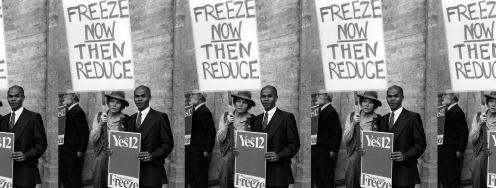Time for Action on the Test Ban Treaty
A U.S. president once said that not achieving a nuclear test ban treaty “would have to be classed as the greatest disappointment of any administration – of any decade – of any time and of any party.”
That president was not Bill Clinton, who presided over the Senate’s failure to ratify the Comprehensive Test Ban Treaty in 1999, but Dwight Eisenhower, speaking in 1961.
Eisenhower, the same president who famously threatened to use nuclear weapons to end the Korean War, and who cut spending on conventional weapons to invest in nukes, also took the first steps towards a verifiable test ban. He established the first U.S. test moratorium in 1958 and negotiated Khrushchev to draft a test ban treaty.
Eisenhower never achieved his vision of a test ban. But others followed in his footsteps. President Kennedy signed the Partial Test Ban Treaty, which prohibited tests in the atmosphere, outer space and underwater in 1963. Eleven years later, President Nixon signed the Limited Test Ban Treaty, which banned tests greater than 150 kilotons. The current U.S. moratorium on nuclear testing moratorium was declared by President George H.W. Bush in 1992 and later extended by President Clinton.
Today’s Comprehensive Test Ban Treaty is the product of more than fifty years of negotiations and bipartisan leadership. And it is even more important in 2012 than it was in 1961.
A new report from the National Research Council highlights the importance of the CTBT for U.S. national security interests. The report concludes that the U.S. has the technical capabilities to ensure the safety and reliability of the nuclear arsenal without testing for the foreseeable future. Furthermore, verification technology has improved since the treaty was opened for signature in 1996. Between the improvements in the International Monitoring System, which is more than 80% complete, and the U.S. monitoring system, clandestine nuclear weapons tests are next to impossible.
The U.S. is one of only eight countries that has to sign the Comprehensive Test Ban Treaty in order for it to enter into force. After the NAS assessment, it’s hard to see what could stand in our way. U.S. ratification would encourage other nations, including China, India, and Pakistan, to follow suit. It would increase international pressure on countries that have yet to sign or ratify the Test Ban Treaty – and the countries that remain outside the NPT regime. And U.S. leadership on the CTBT would bolster other nonproliferation efforts.
The CTBT has been a part of U.S. nuclear negotiations for decades. Now it’s time to listen to the bipartisan group of leaders, from George Shultz to Colin Powell, who are calling for ratification. It’s time to follow through on the legacy of U.S. presidents from Eisenhower to Clinton, and ratify the Comprehensive Test Ban Treaty.



